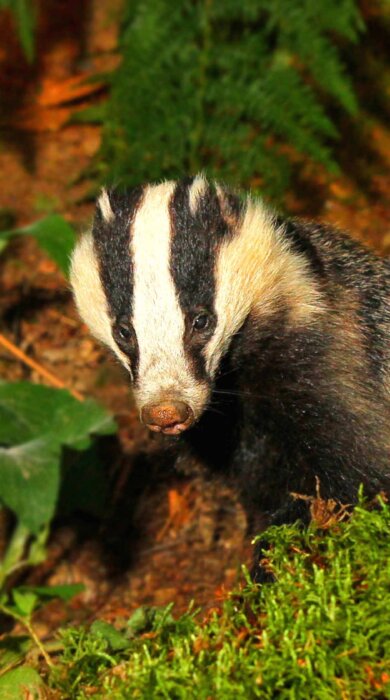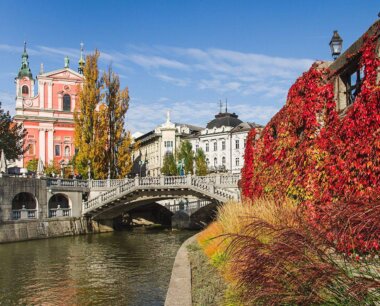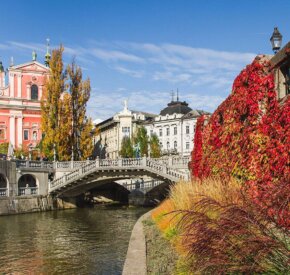
30 ways for you to get wild around the UK
The Wildlife Trusts’ 30 Days Wild challenge encourages you to enjoy nature each day this June. Here are some fantastic ideas for ways to get out and explore wildlife, plantlife, flowers and landscapes
1: Exalt at skylarks’ song

The song of the skylark has inspired more poets than any other; watch and listen as it soars and falls singing beautiful songs.
Where to see them: Gibraltar Point, Lincolnshire
Image: Skylark (Amy Lewis)
2: Marvel at marine megafauna

Basking sharks can be 10 metres long but only feed on animal plankton, sieving it through their vast mouths.
Where to see them: Off the coast of the Isle of Man
3: Spot an otter

Where to see them:Nene Wetlands, Northamptonshire
4: Be dazzled by a buzzard

Where to see them: Priors Wood, Avon
www.avonwildlifetrust.org.uk
5: Hark to a bittern’s boom

The spine-chilling ‘boom’ can carry for up to three miles over reedbeds where they nest. Head for a hide and wait.
Where to see them: Hickling Broad, Norfolk
6: Gape at hunting hobbies

This handsome falcon with a bold black moustache gorges on dragonflies. See this sleek bird over reed beds and wetlands.
Where to see them: Westhay Moor National Nature Reserve, Avalon Marshes, Somerset
7: Scour riverbanks for Ratty

Head to the riverbank to track down one of our most endangered and much-loved mammals, the water vole. Follow the water vole trail to Winnall Moor.
Where to see them: Winnall Moors, Hampshire
8: Journey to seabird city

Experience the sights and sounds (and smells) of a seabird colony. With thousands of birds in one place, the air is full of whirring wings as adults bring food to growing chicks. Stay overnight on Skokholm Island.
Where to explore: Skokholm Island, two miles off Pembrokeshire coast.
9: Stake out a badger sett

Set up a night-watch on a sett and be enchanted by badgers, but don’t disturb them. Go on a guided Badger safari at the Falls of Clyde.
Where to see them: Falls of Clyde, Lanarkshire, Scotland
10: Fall for the fastest bird

Where to see them: Derby Cathedral, Derby
If you can’t get there there’s a webcam
Image: Peregrine (Jon Hawkins – Surrey Hills Photography)
11: Party with puffins

The comical puffin rears its puffling chick in cliff top burrows. Living for 25 years or more, the male returns to the same cliff top year after year to join his mate.
Where to see them: Handa Island, Scotland
You can also try:Flamborough Cliffs Nature Reserve, Yorkshire
12: Spot our largest butterfly

Head to Norfolk to catch a glimpse of our largest butterfly, the rare swallowtail. Its false eye confuses predators.
Where to see them:Cockshoot Broad, Norfolk
13: Be spellbound by summer orchids

Enter a bewitching world of men and monkey, ladies, lizards, frogs and flies – all our summer orchids. Some are fragrant. A rare one smells strongly of bill goats!
Where to see them:Yockletts Bank, near Ashford, Kent
14: Delight in a glowworm

Watch as grasslands light up with glow worms, looking for love. Under a crescent moon let your eyes adjust to the dark and the magic of green lamps on a summer’s eve.
Where to see them:Frays Farm Meadows, London
You can also try:Newbourne Springs, Suffolk
15: Find your flippers for a snorkel trail

Seas off the North West Highlands coast brim with life, from small sea squirts and anemones to dolphins, whales and harmless basking sharks. Strong swimmers should follow the North West Highlands Snorkel Trail.
Where to explore: North West Highlands Snorkel Trail
You can also try: The mild, shallow waters of Kimmeridge Bay, Dorset
16: Go batty as night falls

Unseen and unnoticed by most of us, the countryside fills up with these nocturnal insectivores. For a special view, glide along on a bat punt safari in Grantchester Meadows.
Where to see them: Grantchester Meadows.Cambridge
17: Watch out for wild beavers

Four hundred years after England’s beavers were hunted to extinction, stroll along the banks of the River Otter at dusk or dawn to spot the country’s only wild beavers.
Where to see them: River Otter, Devon
18: Be a kid again

Rock pooling is for adults too! Net in hand, pick up a seashore explorer pack, and enter the world of blennies and velvet swimming crabs.
Where to explore:Purbeck Marine Wildlife Reserve, Dorset
19: Trek to the UK’s newest island at Spurn Point

A wilderness which needs a 4×4 specially converted Unimog Spurn Safari to reach the tip – there’s no road . Read the safety information on tides and soft sand.
Where to explore:Spurn National Nature Reserve, Yorkshire
20: Wear a hat for terns!

Visit a tern colony but don’t get too close: tern parents are notoriously feisty! A hat may come in handy! At Cemlyn Bay, a large lagoon is separated from the sea by a spectacular, shingle ridge.
Where to see them:Cemlyn Bay, Anglesey
Here are some challenging walks to bring you closer to nature in the UK.
21: Brae Pasture, South House Pavement and Southerscales nature reserves

For a real challenge, walk Ingleborough SSSI and National Nature Reserve which makes up part of Yorkshire’s well-known three peak challenge. Clamber over narrow clints (blocks) and grykes (fissures) of the limestone pavement and keep any eye out for buzzards.
Where to explore: Ingleborough SSSI and National Nature Reserve
22: Whitbarrow

With stunning views of the Cumbrian fells and Morecambe Bay, and occupying 100 hectares on top of the Scar, Whitbarrow is a striking place for a long walk. It is also rich in wildflowers and butterflies.
Where to explore: Whitbarrow. Between Kendal and Grange over sands, Cumbria
23: Mynydd Ffoesidoes

Ffoesidoes is over 2000 ft, high up in the Radnor Forest and close to the highest point Black Mixen, with amazing views. It boasts shrub heath, heather and crowberry, which is often filled with Emperor moths. Keep your eye out for the bronze-age burial mound and enjoy the bird song of skylarks, meadow, and tree pipits. For those thirsty for a challenge, trek through the tall and springy heather for a more difficult walk.
Where to explore:Mynydd Ffoesidoes Radnor Forest, Knighton, Powys
24: Helman Tor

Where to explore: Helman Tor, South of Bodmin Cornwall
25: Discover Laurie Lee’s home ground

This six-mile circular walk in the Slad valley remembers the author, best known for Cider with Rosie. The Laurie Lee Wildlife Way explores the landscapes that inspired him. It has very steep hill climbs and breathtaking views. Can you make it around all 11 installed poetry posts?
Where to explore: Slad Valley, Gloucestershire
26: Visit the UK’s newest and most southerly Bird Observatory on Alderney, and explore history too

The Nunnery, temporary home of the ABO, was converted to Resistance Nest ‘Piratenschloss’ by the Germans during WWII. There are a network of bunkers and machine gun posts (without guns!) in the Nunnery garden.
Where to explore:Alderney Bird Observatory
27: Discover Starfish sites on Farlington Marshes

A WWII decoy site designed to draw enemy bombers from Portsmouth’s docks. Fake building and firelight-fooled German bombers, it became the most successful Operation Starfish site in the country. On one night alone in April 1941, over 140 bombers unloaded over 200 munitions on Farlington Marshes and in Langstone Harbour instead of the city of Portsmouth, saving thousands of lives. Control bunkers for this elaborate operation of deception can still be seen around the nature reserve today.
Where to see them:Farlington Marshes, Havant, Hampshire
28: Explosive day out in Wales

Gwaith Powdwr, or the Powder Works, was once the largest explosives factory in Europe. It is now a nature reserve managed for Lesser horseshoe bats, Nightjar and reptiles. It played a vital role in both World Wars manufacturing munitions, and evidence of its industrial past can be seen on a walk round the reserve today.
Where to explore: Gwaith Powdwr, Gwynedd
29: Secret railways

Smardale Gill National Nature Reserve occupies a 6km/3.5 mile section of disused railway line which once ran from Tebay to Darlington. Follow the old line through woodland brimming with plants, trees, then a wide, surfaced path leads to Smardale Gill Viaduct, where common lizards can be spotted sheltering between the huge slabs of sandstone.
Where to explore: Smardale Gill, near Kirkby Stephen, Cumbria
30: A walk through time

Gilfach nature reserve is an old upland farm, with 400 acres to explore. A nature trail follows the River Marteg upstream, past the otter hide, up the lane and out along the Monks Trod with fine views of the valley and great picnic spots.
Where to explore: Gilfach, north of Rhayader, Powys

31: Follow a sat-tagged osprey
Ospreys fly from sub-saharan Africa to Rutland Water to make their summer home. Follow their progress and see them and their chicks at Rutland Water.
For information on where to see them visit: to see them, visit:www.ospreys.org.uk/
Alternatively, check out the Opsrey web cam
You can find more challenging walkshere.
30 Days Wild is an initiative by the UK’s Wildlife Trusts, encouraging people to spend a few minutes – or a few hours – each day enjoying nature. Sign up to get a free 30Days Wild pack* and download the app for inspiring Random Acts of Wildness. Blog about it and 30 Days Wild could host your blog. Enter the competition too. Share your adventures #30DaysWild & @30DaysWild and on Facebook
Packs*: You can sign up now to get a free 30 Days Wild Pack – wildflower seeds, mini meadow instructions, everyday nature spotter ID sheet, poster/wall chart to record activities, stickers. There’s a download version (without the seeds and stickers).
Contact 30 Days Wild for more information.
Find easily accessible wild places here.




















